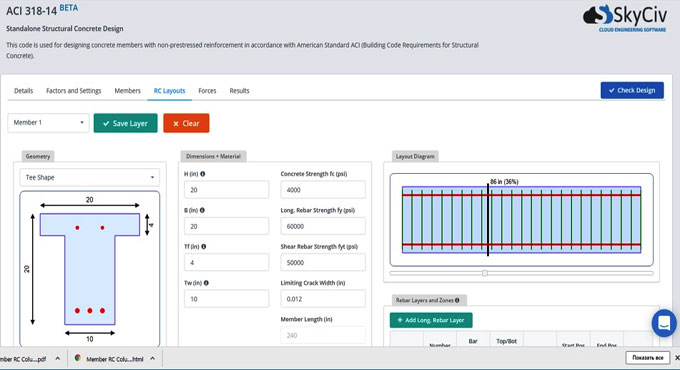
What Does Reinforced Concrete Mean?

Reinforced Concrete - Its meaning
A concrete member or slab which contains steel reinforcement in the form of steel bars to increase the strength of the structure is called reinforced concrete. The material that is formed by combining concrete and reinforcing bar is termed as Reinforced Concrete (RC).
The reinforcement steel is placed in the formwork first either by prefabricated steel cage or rebars that are tied together and wired in-situ when the construction takes place. To guarantee that a high level of collaboration is taking place the concrete is poured into the formwork and it is then vibrated using the right kind of devices.
The Importance of Reinforced Concrete
The low tensile strength is one of the biggest disadvantages of concrete, at low levels of load the concrete even expands. The low tensile strength is the reason for which cracking of concrete surfaces take place which not just harms aesthetically but also in terms of serviceability as well as structural integrity problems. Whereas, the reinforcing steel has high tensile strength along with a symmetrical material constitutive law under the tension and compression.
The rebar alone when it faces compression it fails massively due to buckling. This is the reason why the use of reinforcement in an RC section can lead to effective structural behavior as reinforcing steelworks effectively under tension along with that concrete also works well under compression and confines the compression reinforcement.
The collaboration that takes place between concrete and reinforcement steel is possible because of the fact that both these materials have the same thermal expansion coefficient by which it means that the temperature variation does not add to any internal stresses in the concrete-rebar-interface.
Where can Reinforced Concrete be used?
In modern construction reinforced concrete is widely used especially for buildings and bridges. A number of members are included in such projects, such as:
1. Plate-type members: horizontal plates (for example slabs, bridge deck slabs, and raft foundation slabs) or verticals (example shear walls along with core walls around staircases or elevators).
2. Line-type members: this includes beams, columns or piles.
3. Vertical loading plates: This type members offer a certain stiffness and strength in more than one direction within the member?s plan, whereas line-type members confer strength and stiffness in just one direction.
Examples of (cross-sections) of RC?
The vertical linear members such as columns and piers whose cross sections have a very simple geometry (mostly square, rectangular, or circular) which is dictated by the idea that these members must offer equal or similar resistance in all horizontal directions. Such geometric configurations help in reducing costs which is related to formwork.
A common rectangular shape is formed by the cross sections of beams which are used in building projects, whereas an I-shape is formed in bridge girder cross-sections which reduces weight and accommodate the placement of post-tensioning tendons.
SkyCiv Reinforced Concrete design Software
This software offers an easy-to-use reinforced concrete design software which helps to analyze and design reinforced concrete members. Analysis of the loads on the members can be made possible using the SkyCiv Beam software.
Download Reinforced Concrete Design

Courtesy: skyciv.com

